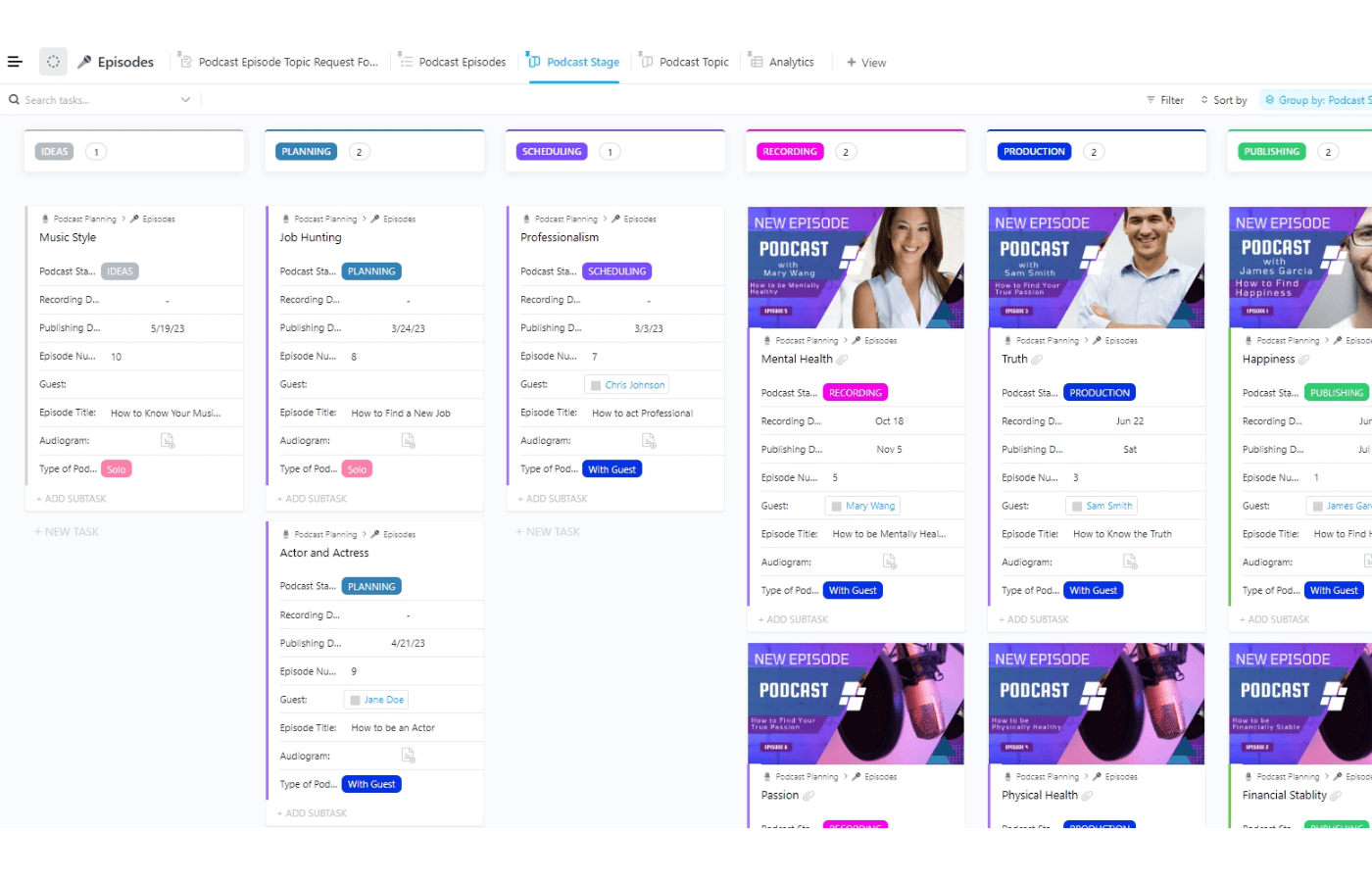Key takeaways
What is Project Identification?
Project identification is the process of brainstorming, analyzing, and selecting a project to initiate as a preliminary step before the first phase of the project life cycle begins. In many cases, the individual responsible for identifying and pursuing a new project is also responsible for creating the project proposal. This proposal generally contains a final goal, cost and time estimates, and a list of tasks and activities to be completed.
What Are the Goals of Project Identification?
In project management, the primary purpose of project identification is to create new, worthwhile projects for the organization. The initial project ideas can come from many different sources, including the following:
Regardless of where the idea originates, the fact remains that the project identification phase is a crucial step to ensuring project viability.
Most organizations also use project identification to achieve numerous additional goals.
Understand problems and identify root causes
Project identification helps you understand problems. This includes internal issues such as your company’s ability (or inability) to hire and retain top talent, as well as external problems that pose a threat to your organization, such as the popularity of one of your competitors.
When done correctly and completely, project identification does more than highlight problems—it actually helps you determine the root causes of any problems you’ve uncovered and address them.
Ensure projects align with organizational values
It’s also important to make sure that your new projects align with your company’s mission statement, organizational values, and public image. Projects that could have a detrimental effect on any of these elements should be highly scrutinized to ensure they’re appropriate for your team and organization.
To help ensure alignment, ask yourself or your project teammates the following questions:
Questions like this help you identify project needs while ensuring that your project is in line with your organization’s current goals, values, and priorities.
Allocate and coordinate resources
Project identification plays a key role in determining, allocating, and coordinating your project resources. This refers to any tools—technological or otherwise—that you’ll need to complete the project, any necessary training or certifications, and the amount of time needed to complete the project at hand. If any one of these resources isn’t available or if their current status can’t be determined, then you might have to hold off on your project until everything is ready for use.
This step also helps coordinate activities between departments. If your project teammates are waiting for your IT team to perform upgrades or maintenance on certain systems, for example, you can utilize this stage to schedule those upgrades and plan for your project to start as soon as the maintenance has been completed.
Determine organizational goals for the future
Although project identification is often used to identify immediate goals for the project at hand, it can be used to help determine your organizational goals for the future too. If you’re interested in making your workplace a hybrid work environment by the end of the year, for example, you will have to create several projects to help make this a reality.
While the first project might involve the rollout of a new, remotely accessible CRM for your staff, the second might involve a test trial that sees one or two employees taking on hybrid roles. After these projects are proven successful, you’ll be able to start your final project of transitioning your entire workforce into hybrid roles.
5 Benefits of Project Identification
Project identification provides short- and long-term benefits to yourself, your team, and your organization. Depending on your specific project, these benefits could vary.
Helps identify critical success factors
Critical success factors is a project management term that refers to the various tasks, activities, and milestones that are most crucial to the project’s overall success. These are often presented to key stakeholders when trying to gain their approval for a project, and they serve both as a metric for measuring success and as a key selling point of the project as a whole.
Provides basis for determining KPIs
Similar to critical success factors, key performance indicators or KPIs provide a quantifiable means of analyzing project performance. For best results, these KPIs need to correlate directly with the final goal of the project at hand.
Reduces project risks
Project identification provides an effective means of identifying and reducing project risks. The risk analysis phase is a crucial part of the process, and it can be carried out by any number of risk analysis strategies.
Minimizes resources needed
Expert PMs use project identification to minimize the necessary project resources, both for the current project and any future works. Minimizing project resources ultimately lets you allocate resources elsewhere, either to other projects or day-to-day operations, but you still need to make sure that all of the project goals can be fulfilled according to schedule.
Keeps employees engaged
The project identification process is also a highly effective team-building exercise. Including project teammates in the various phases can go a long way in keeping employees engaged while waiting for project approval, and it also gives new hires a chance to get acquainted with their coworkers.
7 Stages of Project Identification
It’s best to split the project identification process into multiple, smaller stages. Not only does this make it easier for your team to complete the project according to plan, but it also makes it easier for you—and key project stakeholders—to track their progress along the way.
1. Brainstorming
You’re probably already familiar with the concept of brainstorming, and this is no different. If you’re unsure where to start, it’s usually helpful to identify specific problems that can be solved through your project. This could be as simple as trying to solve high turnover rates amongst your staff or even something that reaches outside your organization. Every idea is valid during the initial brainstorm session, and you’ll figure out which ones are feasible and worthwhile in the following steps.
2. Initiation
This is where your project officially starts. Experienced PMs use this stage to develop an initial project brief or scope, but it will likely undergo some revisions in the latter stages of the process.
3. Feasibility analysis
Project feasibility analysis is usually performed following its own multi-step process. Some of the common steps include:
The feasibility analysis is an invaluable tool when trying to determine if it’s worth the time and effort to move forward with any project ideas.
4. Project scheduling
Once you’ve decided to move forward with a project, the next step is to schedule the individual tasks that comprise the project as a whole. To do this, create a list of activities that all lead to an ultimate goal. Provide an estimated timeframe for each task and assign responsibilities to teammates as appropriate.
5. Risk analysis
Every project carries some amount of risk. Some common risks include:
Since every project is different, it only makes sense that some of the exact risks involved will differ as well. It’s critical to use the project identification process to identify specific risks and how they could affect your project.
6. Close-out
This is the final stage before pursuing project approval. Use this phase to review the resource and time estimations you’ve made thus far and try to ensure they’re as accurate as possible. Not only will this make the entire process smoother and more efficient, but it will save you from not having enough—or having too many—resources assigned to the project at hand.
7. Project approval
The final step before moving forward with your project is to gain the approval of key project stakeholders. If you’ve been diligent with the project identification process up to this point, most proposed projects should be approved with few, if any, unexpected complications.
Key Steps in Project Identification
The exact project identification process takes on different forms depending on the industry, the organization, and the PM in charge. If you’re still wondering where to begin or if you’d just like to see an example of project identification in action, consider the following steps outlined below. While none of these steps are necessarily required, they can help make sense of the entire process for you and your team.
1. Brainstorm ideas for your next project
The brainstorming process starts as soon as the project identification process does. For best results, try to include as many team members as possible. Not only is this a valid team-building exercise, but it can also help you conceptualize and create projects that you never would have imagined on your own.
2. Initiate your project
Once you’ve narrowed down your ideas, it’s time to move on to the first of the five project management phases: the initiation. This is where you’ll create your initial project brief, which involves outlining the general activities, milestones, and goals, before sharing it with your teammates. However, don’t be afraid to modify the project brief as you make your way through the whole process.
3. Perform feasibility and viability studies
Next, perform the pertinent feasibility and viability studies to ensure that your project is doable. Ensure that the individual project activities all lead to the project’s ultimate goal and that your current staff is equipped to handle their responsibilities.
4. Complete the project schedule
Project scheduling is an art form in and of itself. It’s something that gets easier and more accurate the more you do it, but it can be daunting for novice PMs. Not only will you need to create a roadmap for the allocation of resources, but you will also need to detail the tasks that must be completed before the project can be considered complete.
5. Perform a project risk analysis
This is the time to perform a thorough risk analysis of your project as a whole. There are many different methods your team can use to identify project risks, including:
Other forms of risk analysis are used as well. The key here is to find the method (or methods) that work best for you, your project, and your team members.
6. Estimate resources
Now it’s time to estimate your project resources. Double-check any cost estimates, workforce estimates, and material estimates to ensure their validity. Make sure to include any contractors and sub-contractors, as well as equipment costs, in order to estimate your resources as accurately as possible.
7. Submit for approval
Finally, it’s time to submit your final project proposal and get the approval of key project stakeholders. If the project isn’t approved, you may have to make necessary revisions before you can begin working on the actual project itself.
Bottom Line
Project identification is the initial process that must be completed before a new project can begin. The exact process tends to vary greatly—not only between industries and professions but also between competing organizations. While this guide is meant to inform modern PMs and direct them through the process, the process of identifying projects really works best when it is adapted and customized to match your organization’s current project workflow.





